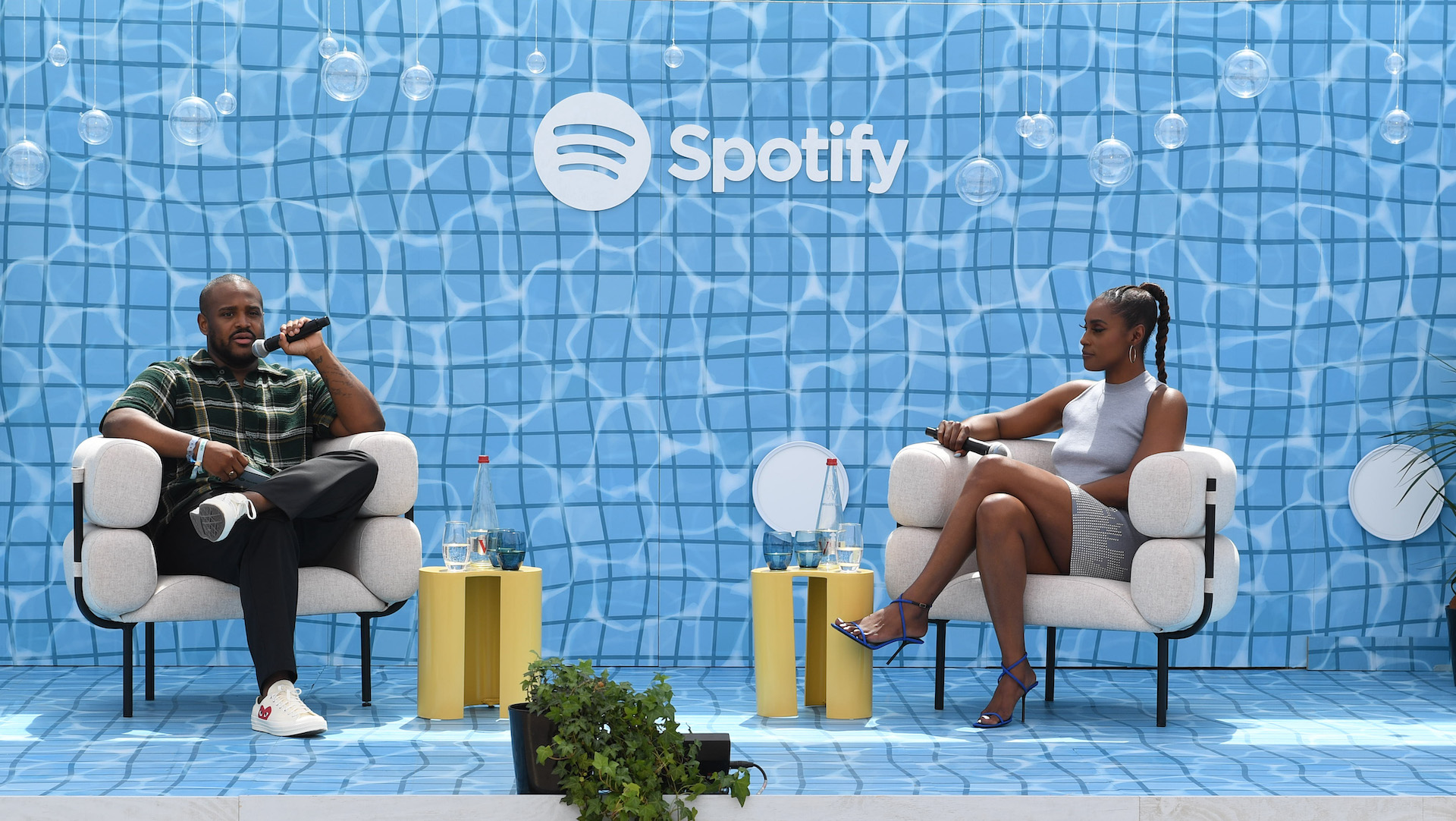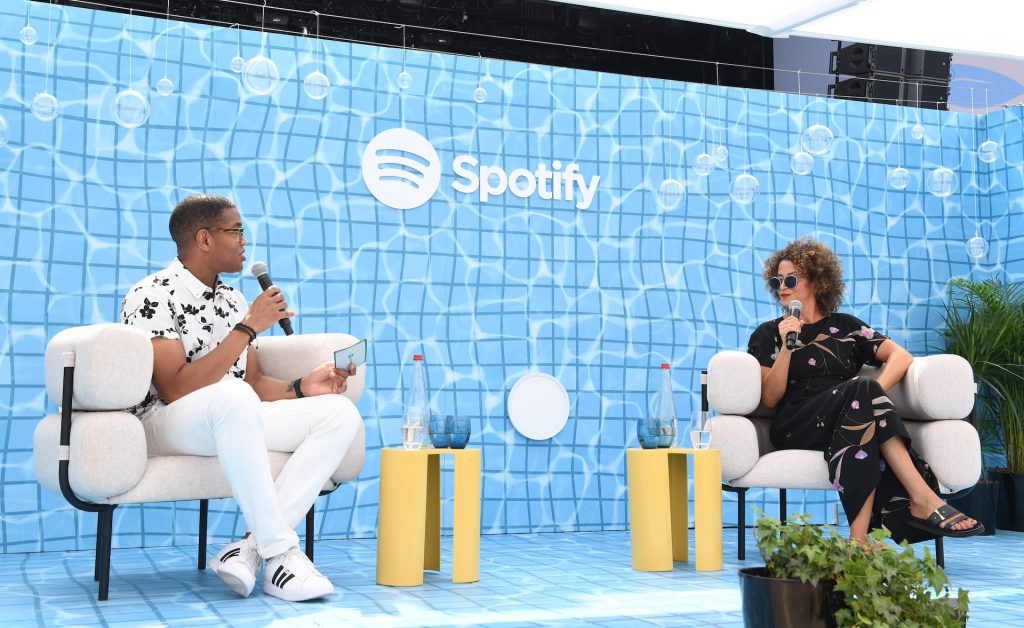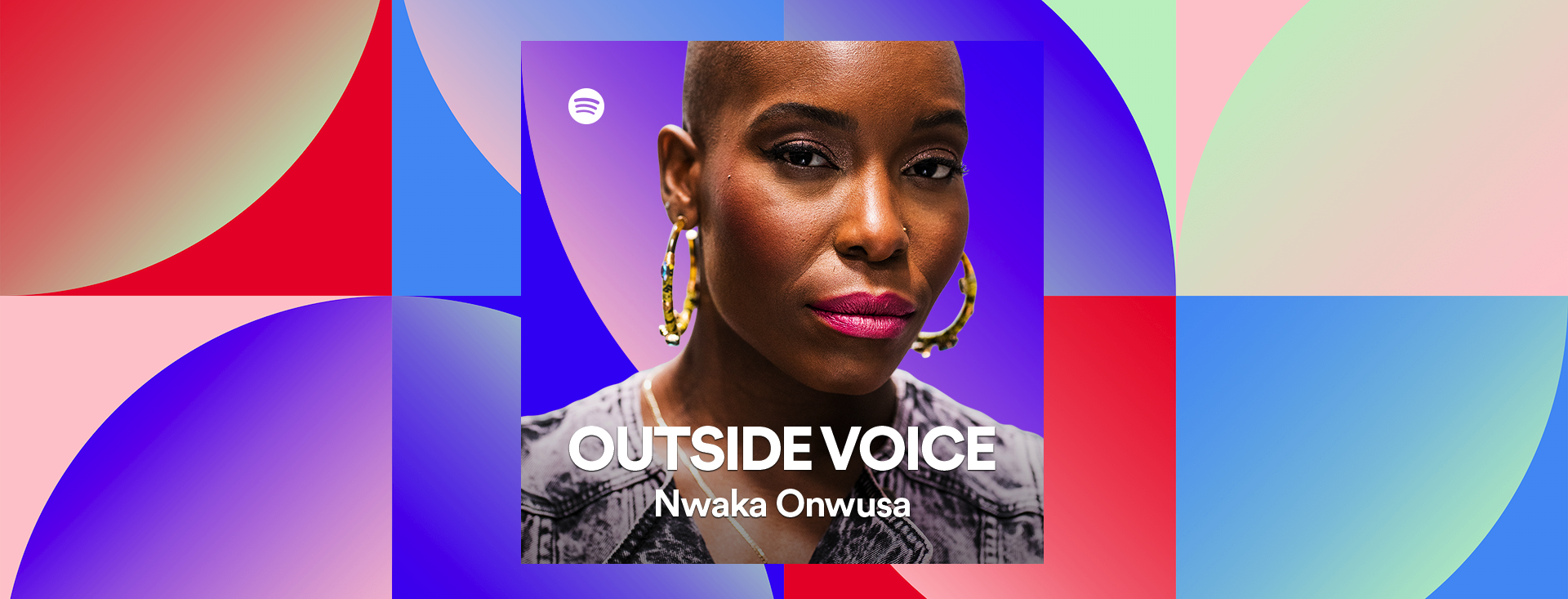
Through initiatives like Frequency, our Creator Equity Fund, and Outside Voice, the Spotify Advertising program that spotlights rising BIPOC talents in the global creative community, we’re committed to giving underrepresented talent an opportunity to shine.
And as part of our Spotify Beach lineup at the Cannes Lions International Festival of Creativity, we invited Joe Hadley, Spotify’s Global Head of Artist Partnership; Tye Comer, Spotify’s Senior Creative Production Manager and Founder of Outside Voice; and Erin Styles, Spotify’s Global Head of Advertising Business Communications, to host a conversation with three industry leaders who are building culture-shaping programs that support and amplify diverse voices. Tina Mahal, SVP of Marketing at Frito-Lay; Rania Robinson, President of Women in Advertising and Communications, Leadership (WACL); and Issa Rae, award-winning writer, actress, director, producer, and creative executive who is the mastermind behind hit shows like Insecure and Rap Sh!t, all took to the stage.

Tye Comer and Rania Robinson
Our three guests shared not only their personal and professional journeys, but actionable insights as well. Here are five key ways for brands to use their platforms to authentically promote and connect with underrepresented communities.
Do more than seek out opportunities—build relationships
When asked how she aligns her personal values with the brands she works with, Issa revealed that she’s less interested in the size of a potential paycheck, and more interested in building valuable, long-term relationships.
“I like to be transparent and ask brands what they hope to get out of a potential partnership, because I don’t wanna waste anybody’s time,” she said. “I want people to find value in collaborating with me and my media company, Hoorae. I want to have long-term relationships with the brands and not one-off situations that fall by the wayside. I remember I did a partnership with a brand, we worked together well, and I really liked what they did. But it was only for one big campaign, and I felt like it should have been a longer partnership.”
Issa also shared that she looks for partnerships that not only fit seamlessly into her personal and professional life, but also elevate the rest of her team at Hoorae Media and the creators they represent. This is what inspired the company’s decision to expand into talent representation with its management arm, Creative Color.
“I would get so many opportunities that I didn’t feel like were the right fit for me, but I knew other up-and-coming creators and artists that could benefit from those,” she said. “And so I’ve been able to just kind of curate my own experiences and help curate the experiences of others.”

Tina Mahal
Double down on ideas that have momentum
Tina remembers that the marketing and advertising efforts of brands made her feel invisible when she was growing up. Now a SVP at Frito-Lay, she’s committed to building programs and creating campaigns that speak to the diverse individuals and communities who buy their products. And last year, Tina and Frito-Lay made headlines by replacing the company’s Cracker Jack mascot with Cracker Jill to promote women’s impact on sports.
Her advice? When you land on the right idea, accelerate.
“One thing I learned over the past year or so is, when you start to feel that excitement and that momentum behind an idea, there’s something there,” Tina shared. “And I would say that if you start to feel that momentum, double down on it. Make it massive. That’s what we did with Cracker Jill. It’s a 127-year-old brand, and we probably haven’t talked about it in a hundred years. We felt that momentum and we knew we needed to go big on it.”
Look beyond the numbers
In her role as WACL President, Rania is committed to getting more women in the professional world into positions of power. But while data suggests that progress is being made, she is wary of using stats as the lone indicator and believes there is still plenty of work left to do.
“The danger is that we are being fed figures that, on the surface, demonstrate huge amounts of progress,” she said. “When you actually unpack that data, you realize that women might be in the C-suite, but they’re not in the positions where they’ve really got the strongest level of influence. So what we are really campaigning for in our 100th year is to get equal representation in the CEO position. Because that’s where people can affect the most change.”
Rania went on to explain that having underrepresented voices in the top job not only provides a tangible shift in equality for women, but for marginalized groups as well.
Expand the scope of representation
While representation is often discussed with regard to public-facing efforts, Issa took a moment to discuss why representation is just as important behind the scenes, pointing out those less-suspecting moments where a lack of diversity is clearly felt.

Issa Rae
“Even with aspects like hair, makeup, or lighting, you’re just like, they can’t find anybody because they didn’t do it in the way that it could be done,” she said.
This is why, according to Issa, Hoorae has taken intentional steps to make sure representation exists across the entire company.
“There are so many Black experiences—diasporic experiences—and I want to make sure that we reflect that within the company, because that’s just gonna open up fresh ideas and creativity,” Issa said. “I think back to staffing the writers’ room for Insecure, and I had an incredible showrunner in Prentice Penny. He pointed out that it would be easy to get a bunch of people who think like me, but that we already had me. I’m one person with one perspective.”
Rania also shared a similar sentiment during the talk, expressing that representation isn’t one-dimensional.
“Proportional representation matters. It shouldn’t be just a certain type of woman that’s in those positions,” she said.
Be authentic
This is a refrain often heard in the marketing and advertising worlds, but it carries no less weight as a result. Over the course of the conversation, all three of our featured guests referenced the importance of authenticity when it comes to diversity efforts.
“Authenticity is key. It’s gotta fit with what you’re trying to do with your brand and your message,” Tina imparted to the crowd. “Trying to be a symbol for the sake of being a symbol is not a great approach. When no one really wants to talk about your efforts and they don’t wanna do anything with it, then it’s a symbol. You don’t actually have something authentic that can grow to something bigger.”
Issa also discussed the importance of authenticity in movies and TV, referencing the fact that fans can always notice when a creator is faking it.
“If you’re making something that is supposed to be authentically Black and people are like ‘No, this is not it,’ you can identify when there are no Black team members,” she said. “When you’re watching or listening to something that reflects an actual experience from a person of color, or a perspective that mirrors your own, you can feel it.”
“I’ll never forget watching a movie get dragged because of set design. It’s a nightmare when people are like, ‘Oh, a character would never have that poster in their room…that doesn’t make sense…nobody Black worked on this.’”
And in discussing the recipe for success when it comes to brand diversity initiatives, Rania also expressed the need for genuine efforts that touch every part of an organization.
“I think there are lots of people working towards diversity and equality, but you’ve gotta do it at the root of your organization,” she said. “People are doing things at quite a superficial level, and it’s not really gonna deliver that change in a way that’s gonna be kind of foundational, sustainable, and meaningful.”
Visit our Spotify Beach website to learn more about the week’s events in Cannes, and catch the latest on-the-ground dispatches from our team on the For the Record podcast.









Recent Comments